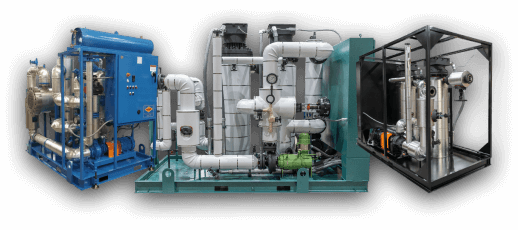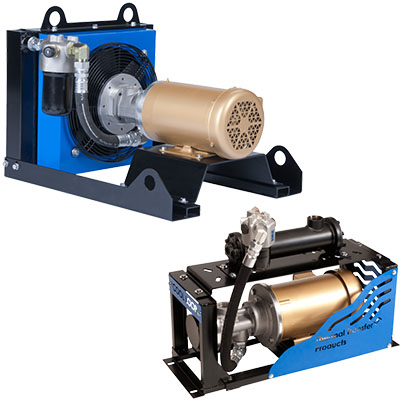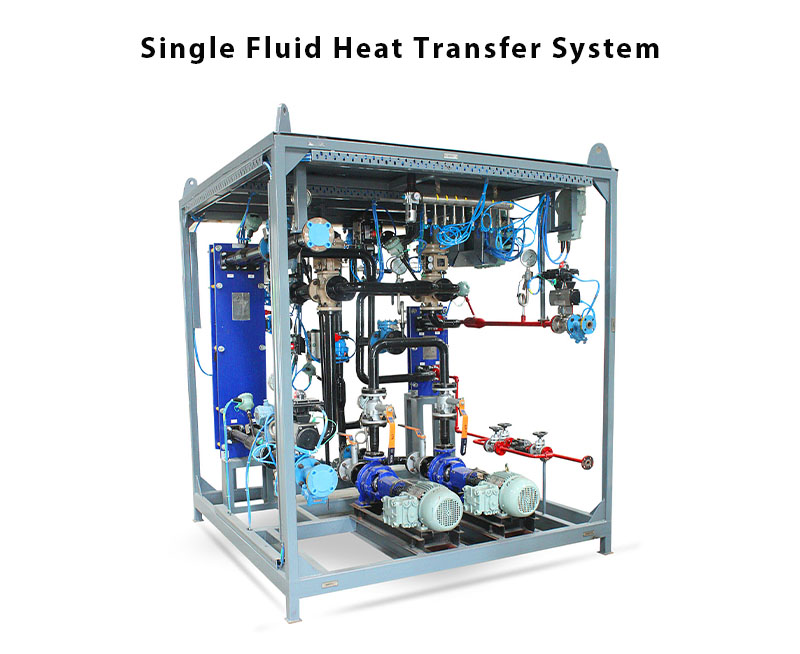5 Smart Strategies DVS Heat Transfer Systems Improve Energy Management in Electronics
Wiki Article
Technologies in Heat Transfer Solutions: What You Need to Know for Optimum Performance
Technologies in Heat transfer systems are changing efficiency throughout different markets. Advanced materials like graphene and nanofluids promise significant improvements in thermal conductivity. On the other hand, the combination of IoT and artificial intelligence uses opportunities for real-time surveillance and boosted energy performance. Nevertheless, the landscape of thermal management is swiftly progressing (DVS Heat Transfer Systems). Recognizing these growths is important for attaining suitable system efficiency and sustainability in the future. What certain developments are shaping this improvement?Emerging Materials for Improved Heat Transfer

Advanced Heat Exchanger Layouts
While conventional Heat exchangers have offered their objective in different applications, advanced styles are currently arising to fulfill the raising demands for performance and performance. These innovative designs, such as plate, shell-and-tube, and finned-tube Heat exchangers, include boosted area and boosted circulation patterns to boost thermal transfer rates. On top of that, small designs allow for decreased area demands without endangering performance. Advanced materials, such as compounds and corrosion-resistant alloys, additionally boost durability and efficiency under severe problems. Simulation modern technologies and computational fluid characteristics are increasingly used to refine these layouts, ensuring peak Heat transfer characteristics. As sectors seek to reduce power usage and make best use of result, the fostering of sophisticated Heat exchanger styles is essential in achieving these purposes.The Function of Nanotechnology in Heat Transfer
Nanotechnology plays a necessary function in enhancing thermal conductivity within Heat transfer systems. By manipulating products at the nanoscale, researchers have accomplished considerable renovations in energy efficiency. These developments not just maximize efficiency yet likewise add to even more sustainable power remedies.Enhanced Thermal Conductivity
Significant innovations in thermal conductivity have arised via the application of nanotechnology, revolutionizing Heat transfer systems across different industries. By including nanoparticles right into Heat transfer liquids and products, researchers have attained exceptional boosts in thermal conductivity. These nanoparticles, such as carbon nanotubes, graphene, and steel oxides, enhance the Heat transfer residential or commercial properties because of their high surface and special thermal qualities. The resulting composites display boosted performance in applications varying from electronic devices cooling systems to renewable resource modern technologies. Moreover, the capability to customize the dimension, form, and structure of nanoparticles enables maximized thermal administration remedies. Because of this, nanotechnology continues to play a crucial duty in the development of extra effective and reliable Heat transfer systems, leading the way for enhanced commercial applications.
Energy Effectiveness Improvements

Combination of IoT in Heat Transfer Solutions
The integration of IoT in Heat transfer systems presents the application of wise sensors that boost functional efficiency. These sensing units enable real-time information tracking, enabling immediate modifications and optimizations. This technological innovation has the potential to considerably enhance performance and energy management in Heat transfer applications.Smart Sensors Application
As Heat transfer systems progress, the combination of smart sensors via the Net of Things (IoT) has arised as a transformative approach. These sensors enable real-time monitoring of stress, temperature level, and circulation rates, enhancing system efficiency and reliability. By gathering and transferring information, they help with proactive upkeep, decreasing the threat of system failings. Additionally, clever sensors contribute to power financial savings by refining functional criteria based on environmental problems. Their capability to examine anomalies and fads allows for educated decision-making, making certain peak efficiency of Heat transfer systems. As sectors progressively adopt this technology, the execution of smart sensors stands to transform exactly how Heat transfer systems are managed, leading the way for higher sustainability and enhanced efficiency end results.Real-Time Information Tracking
Exactly how can real-time information monitoring improve the performance of Heat transfer systems? By incorporating Net of Things (IoT) technology, Heat transfer systems can leverage constant data collection from wise sensors. This real-time tracking permits for immediate evaluation of stress, temperature, and flow prices, enabling operators to determine inadequacies promptly. As a result, modifications can be made to optimize performance, reduce power consumption, and prolong equipment lifespan. Furthermore, predictive upkeep can be executed, lessening unexpected downtime and expensive repair work. The ability to picture performance metrics through dashboards improves decision-making, promoting a positive method to system administration. Inevitably, real-time information keeping track of not only improves operational efficiency yet additionally adds to sustainability goals within industrial procedures.Power Efficiency and Sustainability Trends
Energy effectiveness and sustainability fads are improving the landscape of Heat transfer systems, driving advancement and conformity throughout various sectors. Organizations are progressively prioritizing energy-efficient layouts to reduce operational expenses and decrease ecological effects. The integration of sustainable energy sources is coming to be more common, allowing Heat transfer systems to run sustainably while satisfying governing needs. Additionally, improvements in modern technologies and products promote lower energy usage and improve overall efficiency. Lifecycle evaluations are also acquiring grip, allowing companies to examine the environmental effect of Heat transfer systems from manufacturing to disposal. This concentrate on sustainability not only supports company duty but additionally positions companies competitively in a market where customers increasingly favor eco-friendly remedies. As a result, power efficiency and sustainability remain critical considerations for future advancements in Heat transfer technology.Developments in Thermal Administration Solutions
While the need for efficient Heat transfer remains to rise, technologies in thermal management solutions are emerging to address both performance and sustainability difficulties. resource Advanced products, such as her explanation phase change products and nanofluids, are being created to boost Heat transfer performance - DVS Heat Transfer Systems. These materials enhance thermal conductivity and enable for much better temperature level law in different applications. Additionally, technologies like energetic thermal control systems are acquiring traction, allowing real-time adjustments to handle Heat circulation efficiently. These systems contribute to power savings and reduce the environmental influence of thermal processes. The assimilation of IoT in thermal management assists in monitoring and anticipating upkeep, making sure enhanced efficiency and long life of Heat transfer systems. On the whole, these developments represent considerable strides toward more sustainable thermal administration techniquesFuture Directions in Heat Transfer Technology
Arising developments in thermal management solutions indicate an encouraging future for Heat transfer technology. Researchers are progressively focusing on creating materials with exceptional thermal conductivity and improved energy efficiency. Developments such as nanofluids, which contain put on hold nanoparticles, supply considerable renovations in Heat transfer performance. Additionally, the combination of wise products that adjust to varying temperature conditions is getting traction, enabling for more responsive and reliable systems. The increase of additive manufacturing methods is additionally enabling the design of complex Heat exchanger geometries that maximize fluid circulation. The implementation of machine discovering formulas is prepared for to reinvent the optimization of Heat transfer systems, facilitating predictive maintenance and efficiency improvement. Collectively, these advancements are poised to transform the landscape of Heat transfer technologies in different markets.
Frequently Asked Concerns

How Do I Select the Right Heat Transfer System for My Application?
Picking the appropriate Heat transfer system includes evaluating application needs, consisting of temperature level arrays, liquid residential or commercial properties, and performance needs. Analyzing system types, upkeep considerations, and cost-effectiveness additionally plays a crucial duty in making a notified choice.What Are the Maintenance Demands for Advanced Heat Exchangers?
Maintenance demands for sophisticated Heat exchangers generally include routine evaluations, keeping track of for leakages, cleaning of surfaces, and ensuring optimal flow rates. Complying with manufacturer standards warranties reliable operation and extends the devices's life-span.
How Do Ecological Factors Affect Heat Transfer Efficiency?
Environmental factors considerably influence Heat transfer efficiency. Variants in moisture, airflow, and temperature impact thermal conductivity and convective Heat transfer, eventually impacting system performance and necessitating consideration throughout the style and procedure of Heat transfer systems.What Safety Requirements Relate To Heat Transfer Equipments?
Security standards for Heat transfer systems normally consist of guidelines from organizations such as ASME and ASTM. DVS Heat Transfer Systems. These criteria address materials, design, and functional practices to assure integrity, efficiency, and defense versus threats in numerous applications
Just How Can I Fix Common Heat Transfer System Issues?
Fixing usual check my site Heat transfer system problems entails looking for leaks, ensuring proper liquid flow, inspecting insulation integrity, and verifying temperature level differentials. Recognizing these factors can assist keep system performance and avoid additional problems.Nanotechnology plays an important duty in boosting thermal conductivity within Heat transfer systems. Significant improvements in thermal conductivity have actually emerged with the application of nanotechnology, transforming Heat transfer systems throughout different markets. Improvements in thermal conductivity with nanotechnology have actually led the method for remarkable renovations in energy performance within Heat transfer systems. Power efficiency and sustainability trends are improving the landscape of Heat transfer systems, driving innovation and compliance throughout various sectors. The combination of IoT in thermal monitoring assists in tracking and predictive maintenance, making certain enhanced efficiency and durability of Heat transfer systems.
Report this wiki page